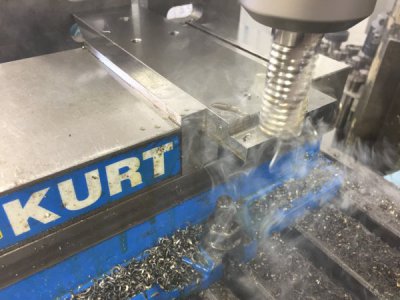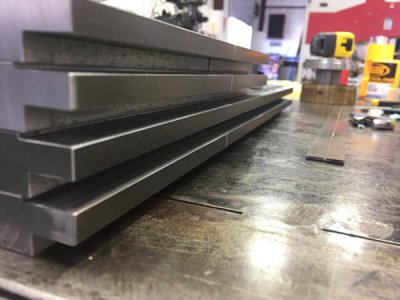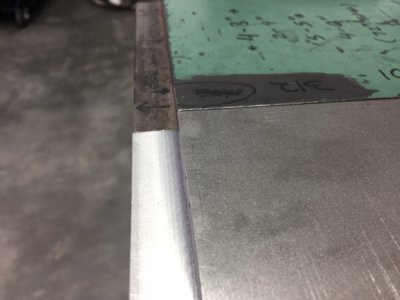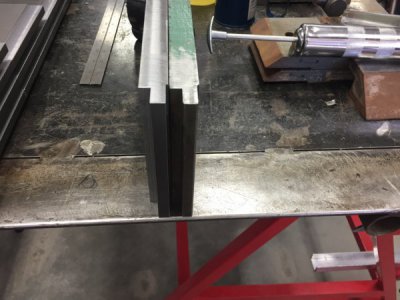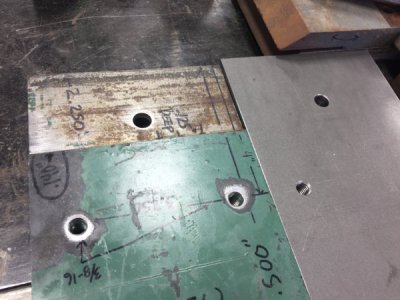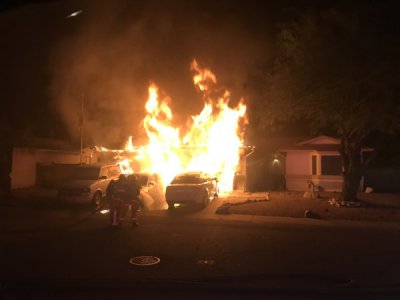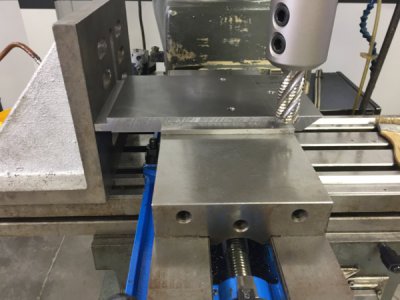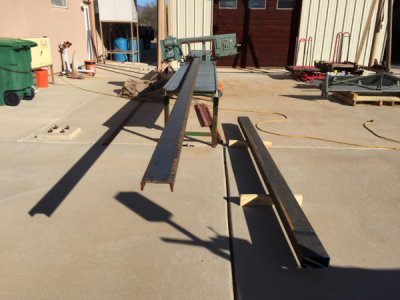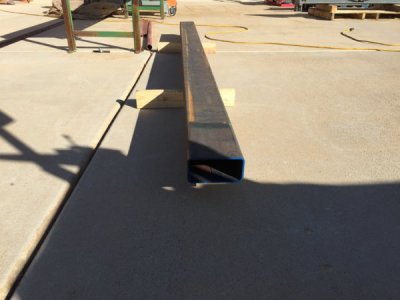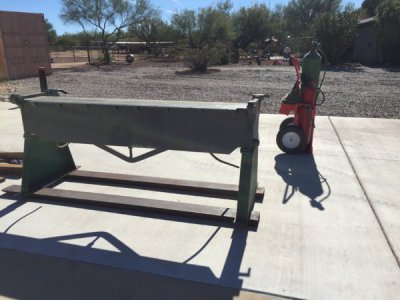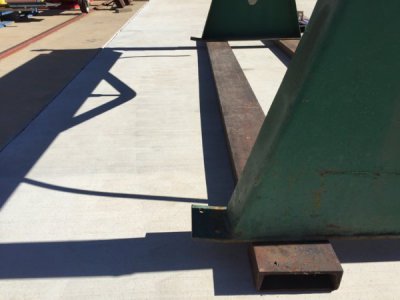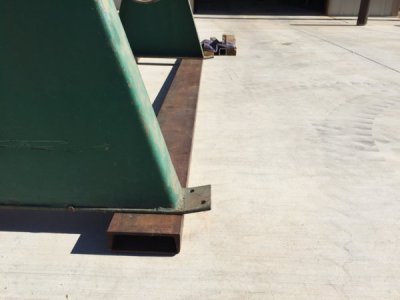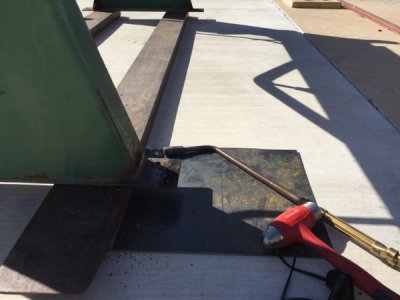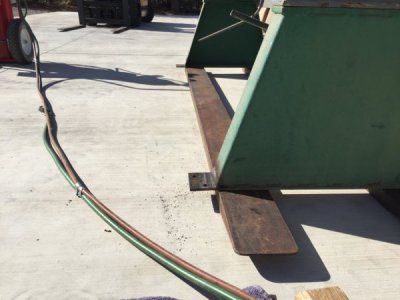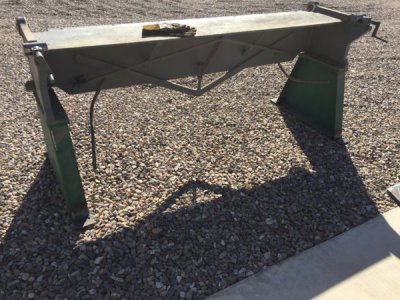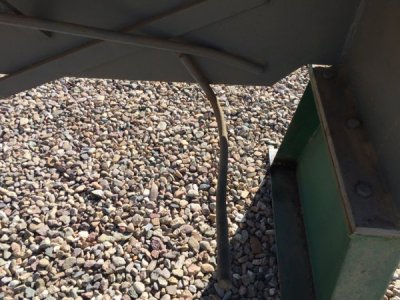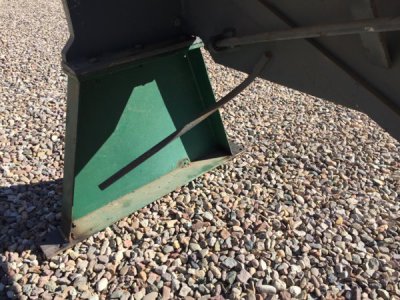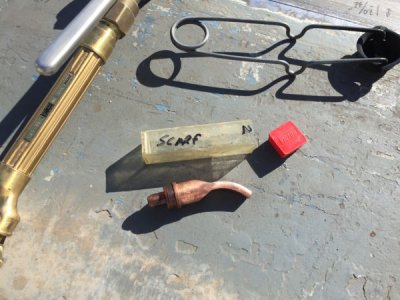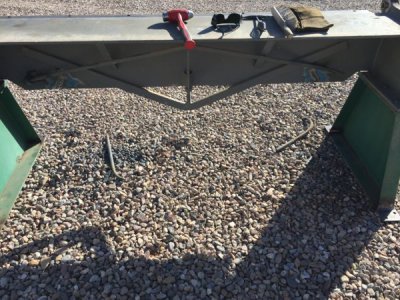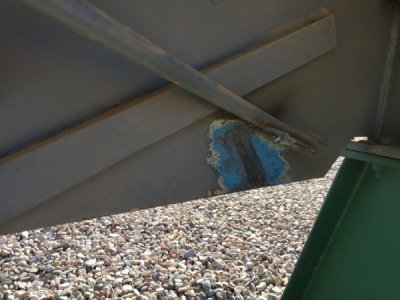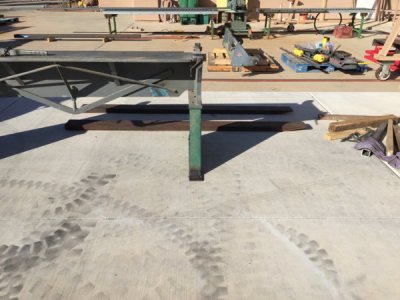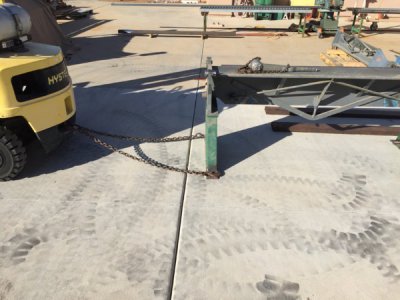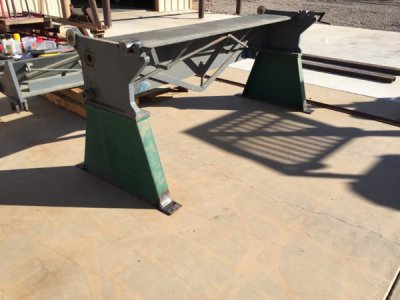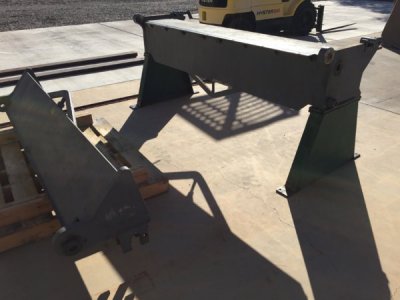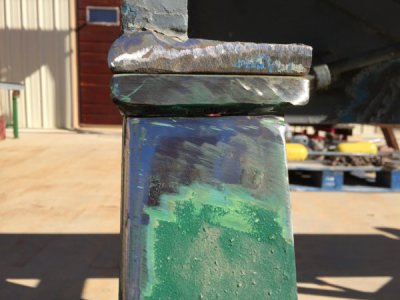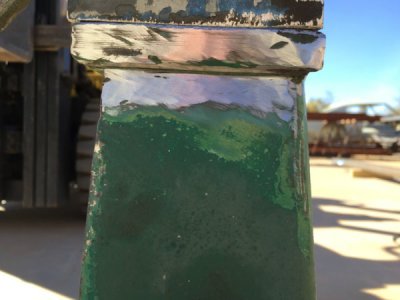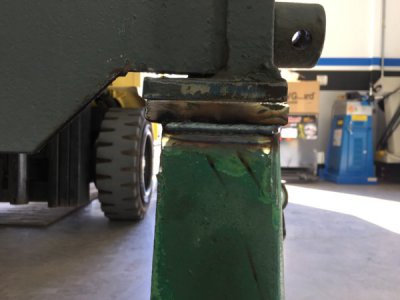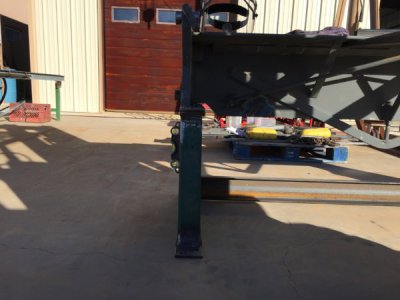F
Firestopper
Forum Guest
Register Today
Made another press tool for the handle link bushings. Turned down an old bushing to use as a sleeve, then parted two different lengths for progressive pressing. Ordered a 1" medium roughing end mill and end mill holder for cutting the .750" x .065" steps and the .750" x .327" steps.
Planning on using the face mill for the larger 3" x .125" nose bar steps.
I used the shorter sleeve to start the tool, then added the second sleeve to complete the push. The old bushing was turned .045" smaller OD than the bushing being pressed out.
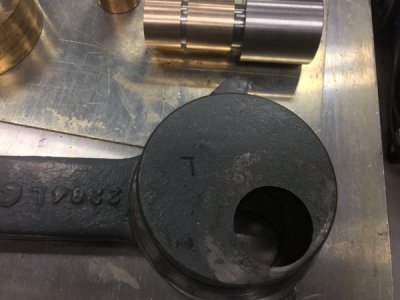
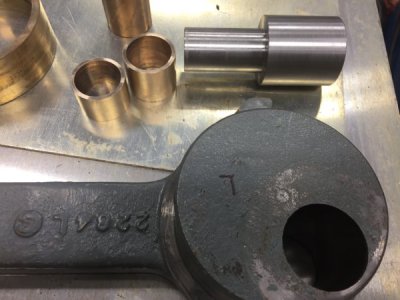
The right side pivot block was chingered pretty good. Apparently some knucklehead used a hammer to to work the block out at some point. More than likely the shaft had scored in the dried bronze bushing i'm guessing. It took a cheater bar and large pry bar to work the pivot block out. It would bind when rotating 360º. Once out, it was obvious the shaft end was hammered on resulting in mushrooming enough to prevent a smooth pivot. Indicated the block end in the chuck and was able to clean up the shaft end. The end also has a snap ring groove that required cleaning up.
The new bushing slipped on well. Then the hammer dings where faced off both blocks for a new look.
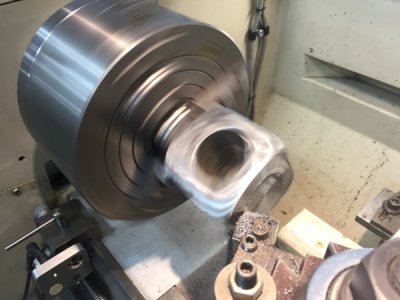
New goodies.
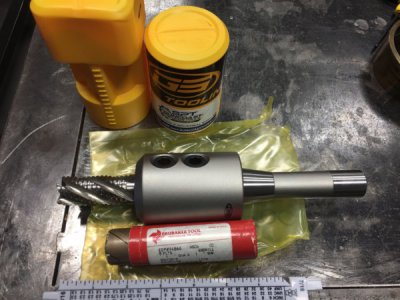
Used the last word to double check the vice set up and a wiggler to set up the DRO.
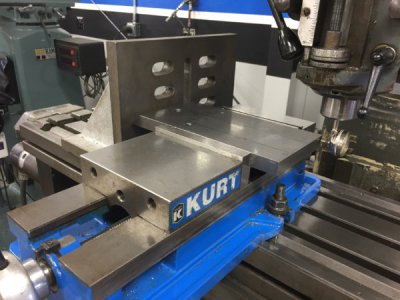
Took the cut .750"x.065" in a single pass. 340 RPM and 10 IPM (power feed). A nice feature with CNC/manual mill is the servo brake preventing the table from moving/creeping. With this larger end mill, I locked the x axis anyway.
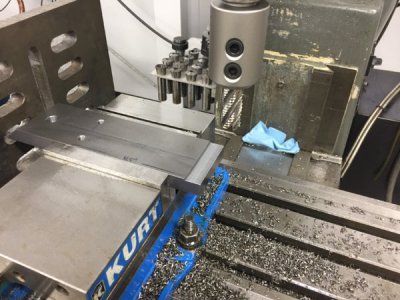
Tomorrow I hope to cut the deeper .327" step in three passes. Those chips coming off the rougher where nasty (thick sharp little "C"s). I had to use needle nose pliers to clear my shoe soles. It made walking slick as hell on the smooth floor.
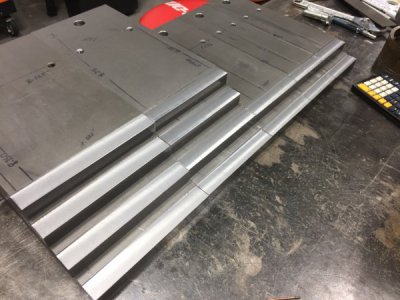
64" worth of step and the end mill still looks great.
I wanted to share a quick story. This morning I received a phone call from Industrial Metal Supply (IMS). Turns out they caught a charge error in my favor. At the time when I ordered the 3/4"x 12" x 72" CR flat bar (33.66 lb/ft) they inadvertently charged me for more weight. Any way, they called to inform me that a $65 credit was placed back on my credit card. Bonus! Its nice to deal with an honest supplier. For those of you who have never stepped foot into an IMS store, Its like metal/tool porn warehouse and they provide EMS/fire with a 15% discount to boot.
For those of you who have never stepped foot into an IMS store, Its like metal/tool porn warehouse and they provide EMS/fire with a 15% discount to boot.
Thanks for visiting.
Turn and burn!
Paco
Planning on using the face mill for the larger 3" x .125" nose bar steps.
I used the shorter sleeve to start the tool, then added the second sleeve to complete the push. The old bushing was turned .045" smaller OD than the bushing being pressed out.


The right side pivot block was chingered pretty good. Apparently some knucklehead used a hammer to to work the block out at some point. More than likely the shaft had scored in the dried bronze bushing i'm guessing. It took a cheater bar and large pry bar to work the pivot block out. It would bind when rotating 360º. Once out, it was obvious the shaft end was hammered on resulting in mushrooming enough to prevent a smooth pivot. Indicated the block end in the chuck and was able to clean up the shaft end. The end also has a snap ring groove that required cleaning up.
The new bushing slipped on well. Then the hammer dings where faced off both blocks for a new look.

New goodies.

Used the last word to double check the vice set up and a wiggler to set up the DRO.

Took the cut .750"x.065" in a single pass. 340 RPM and 10 IPM (power feed). A nice feature with CNC/manual mill is the servo brake preventing the table from moving/creeping. With this larger end mill, I locked the x axis anyway.

Tomorrow I hope to cut the deeper .327" step in three passes. Those chips coming off the rougher where nasty (thick sharp little "C"s). I had to use needle nose pliers to clear my shoe soles. It made walking slick as hell on the smooth floor.


64" worth of step and the end mill still looks great.
I wanted to share a quick story. This morning I received a phone call from Industrial Metal Supply (IMS). Turns out they caught a charge error in my favor. At the time when I ordered the 3/4"x 12" x 72" CR flat bar (33.66 lb/ft) they inadvertently charged me for more weight. Any way, they called to inform me that a $65 credit was placed back on my credit card. Bonus! Its nice to deal with an honest supplier.
Thanks for visiting.
Turn and burn!
Paco


